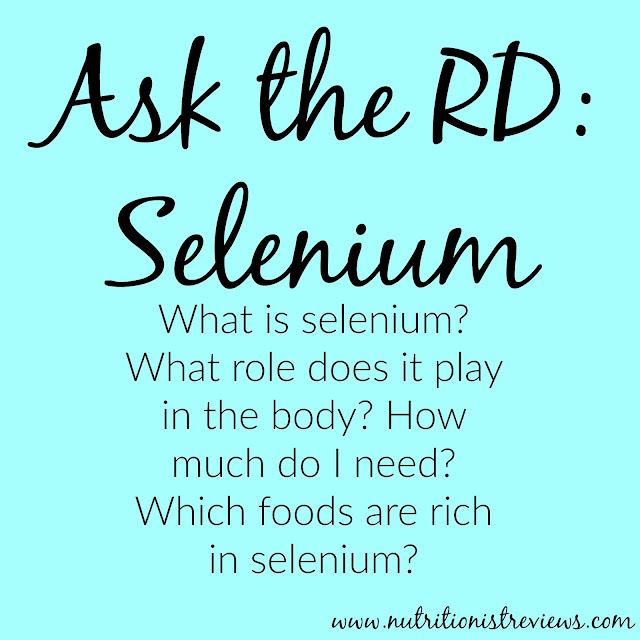January 05, 2016
Ask the RD: Selenium
Selenium is a mineral that is in many foods yet is a nutrient that is not often talked about. It is essential for humans as it plays a role in reproduction, thyroid hormone metabolism, DNA synthesis and protects from oxidative damage and infections. Selenium is also an antioxidant.

Selenium is found in many foods and is especially high in seafood and meats. It can also be found in cereal, eggs, bread, grains and dairy products. The amount of selenium in a food depends on the soil that a plant was grown in.

Tips to Get Enough Selenium in Your Diet:
-Have eggs for breakfast with whole grain toast.
-For lunch, have a chicken, mushroom and asparagus stir-fry with brown rice and cooked with garlic.
-For dinner, have grilled shrimp, roasted broccoli and whole grain pasta.
Below is the daily recommended amount of selenium that you should have based on your sex and age.
Recommended Dietary Allowances (RDAs) for Selenium
| Age | Male | Female | Pregnancy | Lactation |
|---|---|---|---|---|
| Birth to 6 months | 15 mcg* | 15 mcg* | ||
| 7–12 months | 20 mcg* | 20 mcg* | ||
| 1–3 years | 20 mcg | 20 mcg | ||
| 4–8 years | 30 mcg | 30 mcg | ||
| 9–13 years | 40 mcg | 40 mcg | ||
| 14–18 years | 55 mcg | 55 mcg | 60 mcg | 70 mcg |
| 19–50 years | 55 mcg | 55 mcg | 60 mcg | 70 mcg |
| 51+ years | 55 mcg | 55 mcg |

Healthy Tuna Salad
Lightened Up Deviled Eggs
Slow Cooker BBQ Chili

Follow BRI Nutrition on Facebook and Pinterest. Purchase BRI Nutrition selenium supplements on Amazon.com.
*Ask your doctor before starting any new supplement.
Disclosure: This post is sponsored by BRI Nutrition. All opinions are my own.
Share this post:


Comments